Still need a holiday gift for your favorite designer or writer? Current and former Boxes and Arrows staff talk about books that have thrilled them recently, as well as books they continue to go back to year after year. Holiday pairs give you something old and something new to choose from.
Jorge Arango
Godel, Escher, Bach: An Eternal Golden BraidDouglas Hofstadter
January 1999 (20th Anniversary edition)
A brilliant, challenging, witty study of the nature and structure of thought—human and otherwise—that draws on formal systems, zen, artificial intelligence, music, paradox, recursion, and other fascinating topics.
Universal Principles of Design
William Lidwell, Kritina Holden, and Jill Butler
October 2003
100 design principles—concepts such as affordance, constraints, figure-ground, etc.—clearly explained. Includes many examples and illustrations. (As you’d expect, it’s also beautifully designed.)
Pat Barford
The Elements of Style
William Strunk Jr., E. B. White
July 1999 (4th edition)
Best book ever about writing well. The source I always go to when in doubt about word usage, sentence structure, or those niggling little language problems that exist—whatever the medium. Readable, compact, and jam-packed with valuable information There’s also a killer online version.
Editorial note: the online version is only half the story; it’s all Strunk and no White. Spend a couple bucks and enjoy it in print!
Liz Danzico
The Presentation of Self in Everyday Life
Erving Goffman
May 1959
Like Henry Dreyfuss who used his background in theater design to define the field of ergonomics, Goffman relies on the metaphor of theater to reveal elements of human behavior—elements key to interaction designers. Pointing out that an interaction is not just about the performer, but about the audience as well, Goffman presents us with a text critical to any interaction designer. Although written in 1959, this book still brings new evidence about how to build coherency in interactive models today.
Style: Ten Lessons in Clarity and Grace (9th Edition)
Joseph M. Williams
December 2006
You write. You write all the time: stacks of email messages, instant messages, text messages, reports, rants, and reviews. And you follow rules. You follow rules you learned in high school: don’t begin a sentence with “But,” don’t end a sentence with a preposition, and never use fragments. In a time where writing happens more often than not and where the rules no longer apply, we need a book to tell us how to break the rules elegantly. Truth is, they were never meant to be followed in the first place. Williams, in this 9th edition, presents a stunning set of guidelines on how to break the rules, and how to diagnose the problems with your own writing.
Alecia Kozbial
The Design of Everyday Things
Donald A. Norman
September 2002 (Reprint)
Norman looks at the design problems that occur in our everyday lives. This book is an excellent introduction to usability and smart design.
Designing Interfaces
Jenifer Tidwell
November 2005
I have found Designing Interfaces to be an invaluable resource. It is a collection of well-organized UI design patterns for a wide selection of platforms, desktop, web, mobile, and other digital devices.
George Olsen
Designing Visual Interfaces: Communication Oriented Techniques
Kevin Mullet and Darrell Sano
December 1994
Graphic designers have had five centuries of beta testing to figure out communicate effectively. While written for designing applications (in the pre-Internet era), Mullet and Sano show (in a visual manner rather than theorizing) how to apply graphic design principles to interface design.
What Management Is: How It Works and Why It’s Everyone’s Business
Joan Magretta
June 2003
A jargon-free primer on how business (and not-for-profit) organizations work from the perspective of management. More of a comprehensive exploration than traditional how-to, it’s a good way to see the bigger picture and understand the point of view of the “business side of the equation.”
Lars Pind
Designing Visual Interfaces: Communication Oriented Techniques
Kevin Mullet, Darrell Sano
(Editor’s Note: So good, that it’s on the list twice.)
I’m an engineer, not a designer, but this book has given me the vocabulary and tools and theory I need to understand and make decisions about design, not as decoration, but as an integrated part of the communication between software and people. I love it.
Against the Odds: An Autobiography
James Dyson
April 2003
A beautiful entrepreneur story. I’m a big believer in the renaissance, in the combination of art and engineering in one individual, in engineering and design being fundamentally inseparable, a belief I share with James Dyson. On top of that, the 13 years of meticulous iterations and the suffering of setbacks before the final breakthrough is just a plain old good story.
Javier Velasco
The Tree of Knowledge
Mumberto Maturana and Francisco Varela
March 1992
What is life? What is a human? How does our perception work? These are some of the questions that this brilliant team of neurobiologists confront in this book. It’s had an impact in many areas of current knowledge.
Information Architecture for the World Wide Web
Peter Morville, Louis Rosenfeld
November 2006
I just got my copy of the Third Edition of Information Architecture for the World Wide Web by Morville & Rosenfeld. The previous editions have always been favorites and a must-have for all of us. This is a book that has been critical for the development of our field. It seems like the book has been thoroughly revised; I see new screenshots and new subtitles everywhere. It has been updated to include social classification and navigation concepts, and all those other things we’ve been discussing since the last edition. Some advanced findability notions are also considered, as well as more depth on user needs, enterprise IA, and strategy. There’s also more on deliverables than ever before. While sticking to roughly the same amount of pages as the Second Edition, this book seems completely refreshed. I look forward to have a chance to sit down and read it cover to cover.
Emily Wilska
Chicago Manual of Style
University of Chicago Press
August 2003
So it’s not exactly the sort of thing you’d curl up with on a Sunday afternoon. It is the place to look to find the answer to any style-related writing question you’ll ever have (such as whether to hyphenate style-related).
MacBook
I know, I know: it’s not technically a book. But it’s the perfect example of the power of good, thoughtful design, and of the value of making common tasks (like connecting to a network) as simple as possible. Plus, it’s stunningly pretty.
Christina Wodtke
Managing The Professional Service Firm
David H. Maister
June 1997
Should be required reading for anyone in a service profession, including in-house service teams. Teaches you how to (among other things) navigate the treacherous waters of being paid to give advice.
Making Comics
Scott McCloud
September 2006
A strangely compelling combination of “how to”, and “philosophy of” words and pictures working together. If you loved Understanding Comics, it’s worth the perusal. It’s not quite the concise masterpiece that Understanding Comics is, but it’s so chockfull of insight, you forgive the meandering moments.

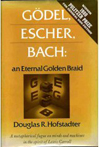
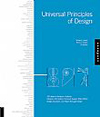
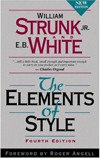
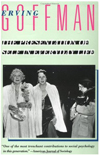
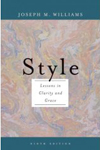
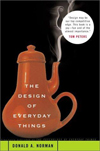
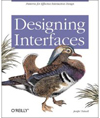
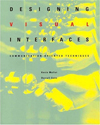
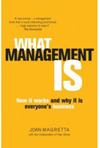

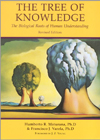
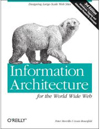
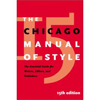

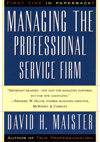
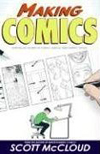
I would like to second Jorge Arango choice of “Godel, Escher and Bach: An Eternal Golden Braid”. No joke, this is quite simply one of the best books ever written. The genius not only of the people Hofstadter describes, but of Hofstadter himself is quite breath-taking (I don’t use the word ‘genius’ here lightly either – it really is a masterpiece of the modern age).
In essence this book is about explaining ‘the self’ – all be it in a rather round-about way – no pseudo-science around here. The patterns Hofstadter analyses, the recurrance relations, recursion and feedback loops are not only talked about but *present* in the book (you will notice even the title, Godel, Escher and Bach: An Eternal Golden Braid has the letters EGB throughout – and the design on the front cover is simply outstanding when you recognise what he’s trying to get at).
Each chapter is seperated by a fictional dialogue designed to reinforce the points he has been making.
Anyway… I can’t say too much about this book! Read! Have you mind twiddled, your eyes twoddled (yes, it’s that confusing at times), and your breath (quite literally) taken away.
Wow really nice collection, personifying the fact that old is god.